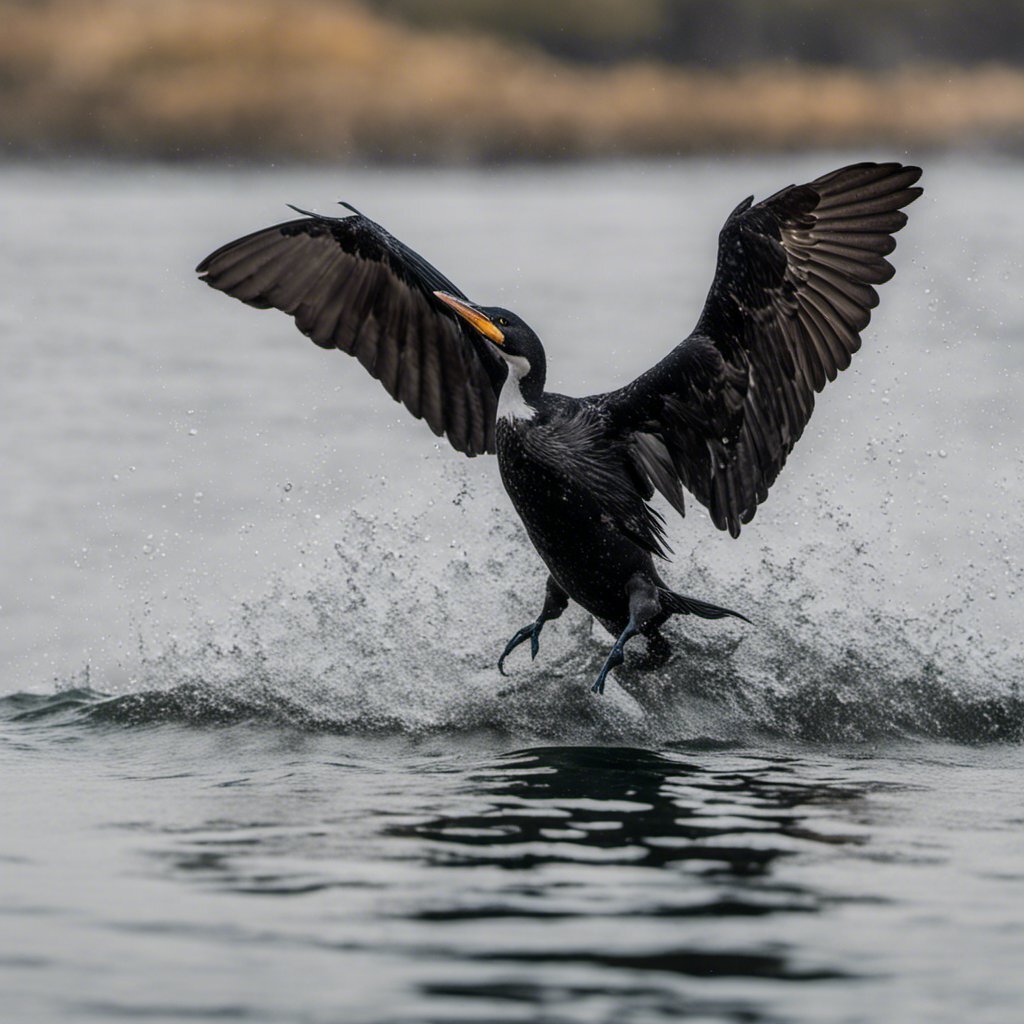Birds are known for their incredible skills and adaptations when it comes to hunting prey. One behavior that fascinates many bird enthusiasts is diving for fish. Indeed, several avian species are capable of diving into water bodies to catch fish, exhibiting remarkable precision and agility.
Throughout this article, we will delve deeper into the world of birds that dive for fish, exploring their unique characteristics, hunting techniques, and conservation challenges. We will also highlight some of the most threatened and endangered species and discuss ongoing research in this field.
Table of Contents
- 1 Key Takeaways
- 2 What Birds Dive For Fish?
- 3 Types of Birds That Dive For Fish
- 4 Common Diving Birds in North America
- 5 Birds That Dive for Fish in Coastal Areas
- 6 Fascinating Fishing Techniques of Diving Birds
- 7 Adaptations for Diving and Fishing
- 8 Migration Patterns of Diving Birds
- 9 Conservation Challenges for Diving Birds
- 10 Threatened and Endangered Diving Bird Species
- 11 Human Interactions with Diving Birds
- 12 Research and Scientific Studies on Diving Birds
- 13 Conclusion
- 14 FAQs: What Birds Dive For Fish?
- 14.1 What birds are known for diving to catch fish?
- 14.2 What are some common diving bird species found in North America?
- 14.3 Which bird species are adapted for hunting fish in coastal areas?
- 14.4 What are some fascinating fishing techniques used by diving birds?
- 14.5 How do birds adapt for diving and fishing?
- 14.6 What are the migration patterns of diving birds?
- 14.7 What are the conservation challenges faced by diving birds?
- 14.8 Which diving bird species are threatened or endangered?
- 14.9 How do humans interact with diving birds?
- 14.10 What research has been conducted on diving birds?
- 15 Author
Key Takeaways
- Different bird species are capable of diving into water bodies to catch fish.
- These birds exhibit remarkable precision and agility when hunting fish underwater.
- Conservation efforts are crucial for the survival of diving birds due to habitat loss, pollution, and climate change.
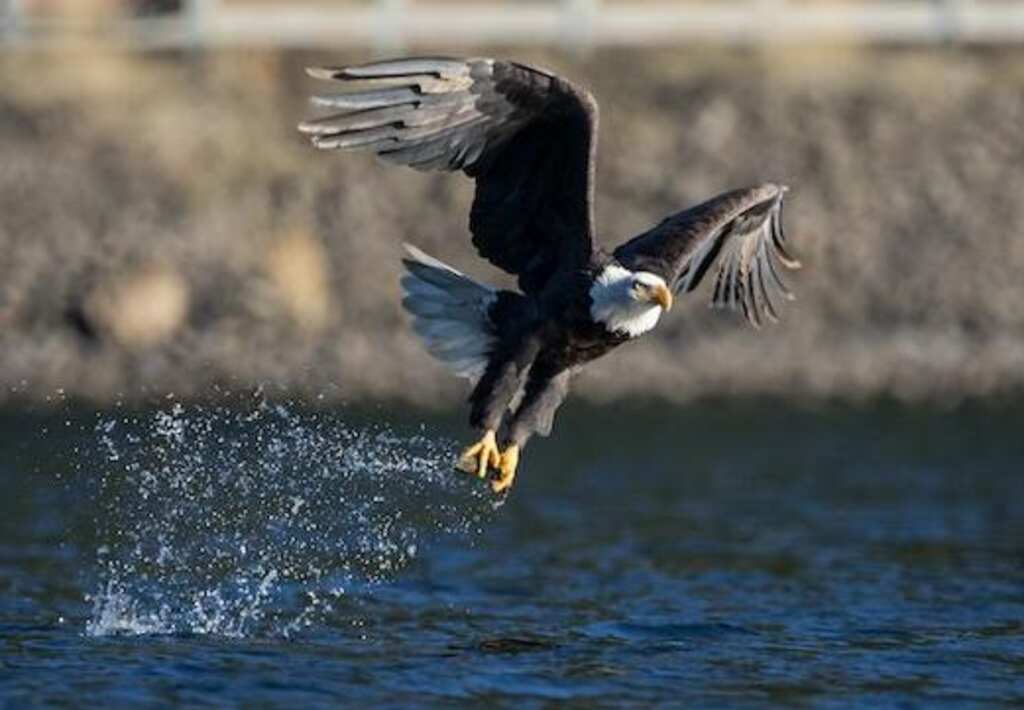
What Birds Dive For Fish?
Many bird species dive for fish, including ospreys, cormorants, pelicans, gulls, terns, kingfishers, puffins, and eagles. These birds have adapted to their aquatic lifestyle by developing specialized beaks, wings, and bodies that allow them to swim, dive, and catch fish underwater.
Ospreys are especially adapted for fishing, with sharp talons and reversible outer toes that help them grasp fish in flight.
Cormorants are known for their ability to dive deep and swim long distances underwater, while pelicans use their large bills to scoop up fish from the water’s surface.
Gulls and terns are opportunistic feeders that often snatch fish from other birds or steal from fishing boats.
Types of Birds That Dive For Fish
There are several types of birds that have evolved to catch fish by diving underwater. These birds use various techniques such as plunge diving, shallow diving, and pursuit diving to catch their prey. Let’s explore some of the most common diving birds.
Seabirds Diving For Fish
Seabirds are a group of birds that spend the majority of their lives at sea. They have adapted to hunting fish in the open ocean and have specialized features that help them to catch their prey. Some of the most common seabirds that dive for fish include:
| Common Name | Scientific Name |
|---|---|
| Gannet | Morus bassanus |
| Pelican | Pelecanus spp. |
| Fulmar | Fulmarus glacialis |
These birds are built for diving and have streamlined bodies, pointed beaks, and keen eyesight, which allows them to spot fish swimming below the surface of the water. They also have air sacs under their skin that cushion the impact of hitting the water at high speeds.
Water Birds Catching Fish
Water birds are a group of birds that live near freshwater bodies, such as rivers, lakes, and wetlands. They have adapted to hunting fish in these environments and have specialized features that help them to catch their prey. Some of the most common water birds that dive for fish include:
| Common Name | Scientific Name |
|---|---|
| Cormorant | Phalacrocorax spp. |
| Kingfisher | Alcedo atthis |
| Heron | Ardea spp. |
These birds have specialized beaks that are shaped to catch fish, and they often have webbed feet that help them to swim and stay submerged underwater. Some water birds, such as cormorants, will dive to great depths in search of fish.
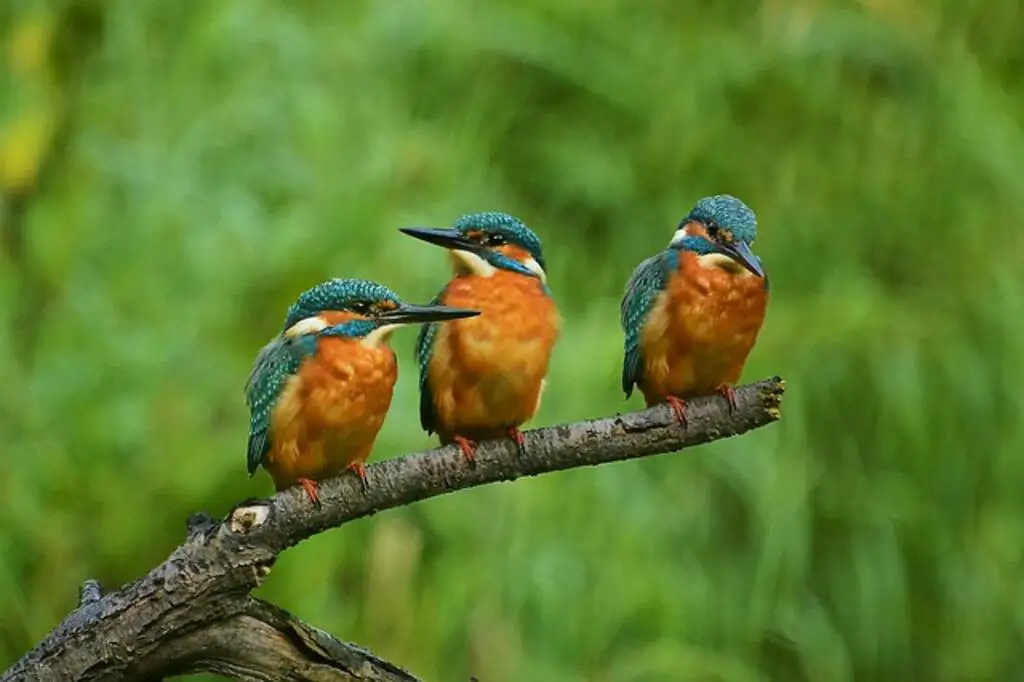
Common Diving Birds in North America
North America is home to a variety of diving bird species that use their impressive fishing skills to survive. These birds can be found in freshwater, saltwater, and coastal habitats throughout the continent.
| Bird Species | Habitat | Migratory Pattern |
|---|---|---|
| Common Loon | Freshwater lakes and ponds | Summer breeding range in northern US and Canada; Winter range along US coastlines |
| Double-crested Cormorant | Coastal and inland waterways | Migrate to southern US in winter |
| Brown Pelican | Coastal areas | Year-round resident in southern US and along the Gulf Coast |
In addition to these species, other diving birds that can be found in North America include the Osprey, Anhinga, Pied-billed Grebe, and the American Dipper.
Some of these birds, like the Common Loon and Double-crested Cormorant, are migratory and travel long distances to breed and winter. The Brown Pelican, on the other hand, is a year-round resident in some parts of the southern US.
Birds That Dive for Fish in Coastal Areas
Coastal areas offer a unique hunting ground for birds that dive for fish. These birds have adapted to meet the challenges of diving and catching prey in marine ecosystems.
Seagulls are perhaps the most commonly known birds that dive for fish in coastal areas. They have a distinctive hunting technique that involves hovering above the water surface before plunging in headfirst to grab their prey. Terns, another coastal bird, also exhibit this plunge-diving behavior. They can dive up to 3 meters deep and catch fish in their beaks.
Ospreys, also known as sea hawks, are renowned for their hunting skills. They hover above the water and dive feet-first to catch fish with their powerful talons. Ospreys are also known for their ability to shake off excess water from their feathers in mid-air.
| Bird Species | Distinctive Characteristics |
|---|---|
| Seagulls | Plunge-diving technique, catching fish in their beaks |
| Terns | Dive up to 3 meters deep to catch fish |
| Ospreys | Hover above the water and dive feet-first to catch fish with talons |
Other birds that are adapted to catching fish in coastal areas include the various species of pelicans. Brown pelicans, for example, are known for their spectacular plunging behavior, diving from heights of up to 20 meters to catch fish.
Overall, the diverse range of bird species that dive for fish in coastal areas showcases the incredible adaptability and diversity of these remarkable avian hunters.
Fascinating Fishing Techniques of Diving Birds
Diving birds have evolved various fishing techniques that enable them to catch fish efficiently. These techniques include plunge diving, shallow diving, and pursuit diving.
Plunge diving is a technique used by diving birds, such as gannets and pelicans, to dive vertically into the water from a great height. The birds fold their wings back and enter the water at high speeds to capture their prey.
Shallow diving is another commonly used technique by diving birds, such as cormorants and kingfishers. These birds dive into the water from the surface, using their wings to swim and propel themselves through the water to catch prey.
Pursuit diving is a technique used by diving birds, such as loons and mergansers, to chase after fish underwater. These birds pursue their prey with their wings and feet, using their strong swimming abilities to catch fish.
In addition to these techniques, diving birds have also developed unique physical adaptations that aid in their fishing strategies. For example, the streamlined bodies of diving birds, such as gulls and terns, enable them to dive into the water without creating much resistance. The webbed feet of birds like cormorants and pelicans provide them with additional propulsion and agility in the water.
Did you know? The common loon can hold its breath for up to 8 minutes while pursuing fish underwater.

Adaptations for Diving and Fishing
To successfully dive and catch fish, birds have developed unique adaptations and physical characteristics.
One of the most important adaptations for diving birds is their streamlined bodies, which reduce drag and enable them to dive quickly and efficiently. They also have special air sacs that allow them to avoid decompression sickness while diving to great depths.
Many diving birds have webbed feet, which they use to paddle and steer underwater, as well as to push themselves to the surface. Some birds, like cormorants, have partially webbed feet that help them to swim faster, while others have fully webbed feet that act like flippers.
Birds that dive for fish also have specialized bills or beaks, which vary in shape and size depending on the species. For example, pelicans have large, scoop-like bills that they use to scoop up fish from the water’s surface, while gannets have long, pointed bills that they use to dive deep into the water to catch fish.
Another adaptation for diving and fishing is the ability to hold their breath for extended periods. Many species of diving birds can remain underwater for several minutes while searching for fish. Some birds, like the common loon, can even close their nostrils and flatten their feathers to reduce drag and increase their diving speed.
Overall, the physical adaptations and characteristics of diving birds are remarkable examples of evolution and natural selection, allowing these birds to thrive in aquatic environments and catch fish with remarkable efficiency and skill.
Migration Patterns of Diving Birds
Diving birds, particularly those that rely on fish as a primary food source, exhibit fascinating migration patterns. During breeding season, many species can be found in specific regions, such as the Arctic tundra for species like the common eider and the Aleutian Islands for the northern fulmar. As winter approaches, these birds migrate southward to find food and avoid harsh weather conditions.
Some diving birds, such as the common loon, undertake long-distance migrations, traveling from their breeding grounds in Canada and Alaska to wintering areas in the Pacific and Gulf of Mexico coasts. Other species, such as the double-crested cormorant, have a more localized migration pattern, moving from their breeding areas in the northern United States and Canada to the coasts of the southern United States and Mexico.
Migration patterns can also vary depending on the species’ life cycle and age. Young diving birds may travel further than adults during their first migration period, as they search for suitable habitats and establish their own territories. Some species, like the brown pelican, exhibit migratory movements that are heavily influenced by food availability and weather patterns.
Understanding diving birds’ migration patterns is crucial for conservation efforts, as habitat loss and human disturbance can disrupt their migratory journey and impact their survival. By studying their movements and monitoring their populations, researchers and conservationists can identify critical stopover sites and implement strategies to protect these areas from development, pollution, and other threats.
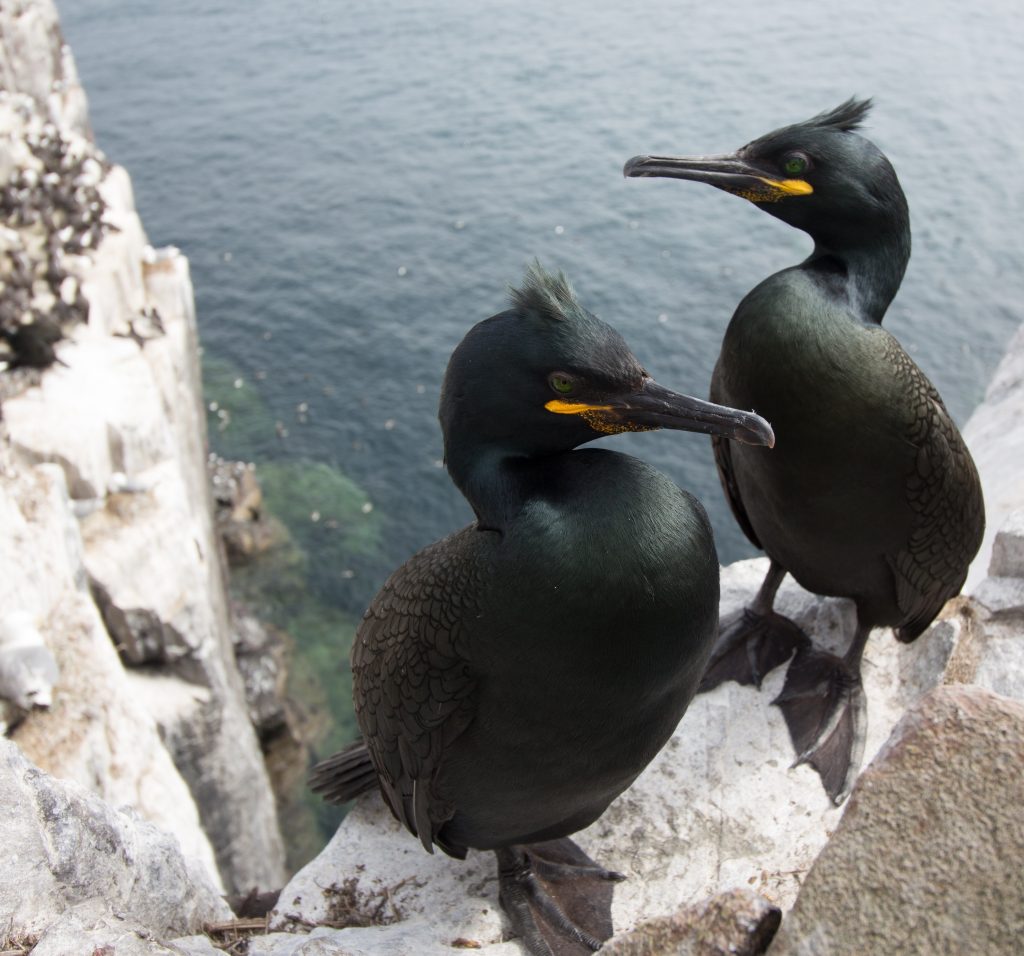
Conservation Challenges for Diving Birds
Diving birds face a range of conservation challenges that threaten their survival and ability to hunt fish effectively. These threats include:
| Threats | Impact on Diving Birds |
|---|---|
| Habitat loss and degradation | Reduces availability of suitable nesting and foraging sites, leading to population declines and range contractions for some species |
| Pollution | Contamination of marine and freshwater habitats from oil spills, chemical runoff, and plastic pollution can affect the health of diving birds and their prey, leading to higher mortality rates |
| Climate change | Alterations in oceanic and atmospheric conditions can impact the availability and quality of fish prey, as well as breeding and migration patterns for diving birds |
| Human disturbance | Activities such as boating, noise pollution, and coastal development can disrupt diving birds’ feeding, breeding, and nesting behavior, reducing their reproductive success and survival rates |
Conservation measures to protect diving birds include habitat restoration, pollution control, and coastal zoning regulations to limit human disturbance. Additionally, fisheries management practices that take into account the needs of diving birds can help maintain healthy fish populations and ensure a sustainable food source for these remarkable birds.
Conservation Success Stories
“In recent years, concerted conservation efforts have helped to reverse the population declines of several diving bird species. For example, the brown pelican, which was listed as endangered under the Endangered Species Act in 1970, has rebounded in numbers thanks to a ban on DDT and other pesticides that caused eggshell thinning and reproductive failure.
The common loon, which has suffered from mercury pollution and habitat loss, has also seen some recovery in parts of its range due to wetland protection and restoration efforts.”
However, diving birds still face numerous challenges, and ongoing conservation efforts are necessary to ensure their survival and continued role in aquatic ecosystems.
Threatened and Endangered Diving Bird Species
Diving birds play a vital role in aquatic ecosystems, but unfortunately, some species are facing threats to their populations. Here are a few examples of diving bird species that are currently endangered or threatened:
| Bird Species | Conservation Status | Reasons for Decline | Conservation Efforts |
|---|---|---|---|
| Common Loon | Threatened | Habitat loss, pollution, human disturbance | Safeguarding breeding sites, monitoring populations, promoting education and conservation |
| Brown Pelican | Recovered but still at risk | Pesticide exposure, human disturbance, oil spills | Monitoring populations, habitat protection, enforcing regulations on fishing and pollutants |
| Double-crested Cormorant | No federal status but some states consider them a “nuisance” species | Perceived competition with fishing industry, hunting, habitat loss | Monitoring populations, habitat protection, research to dispel misconceptions about impacts on fishing industry |
It is critical to continue conservation efforts for diving birds, especially those that are threatened or endangered. These birds represent an integral part of the ecosystem and their decline would have significant impacts on the environment.
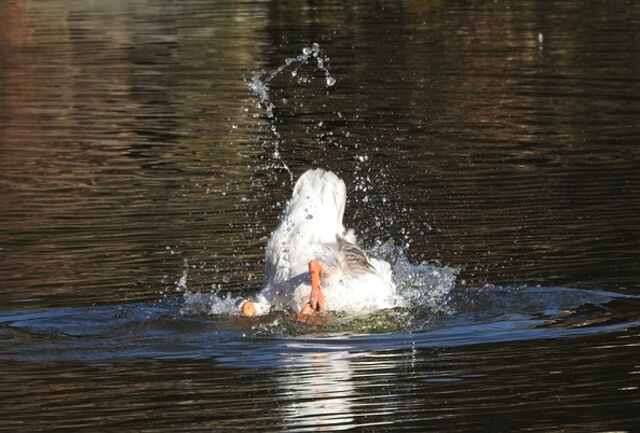
Human Interactions with Diving Birds
Diving birds have long fascinated humans with their fishing abilities, and as a result, interactions between people and these avian species take many forms. While some of these interactions are positive, others can have detrimental effects on diving bird populations.
Birdwatching and Ecotourism
One of the most common ways people interact with diving birds is through birdwatching and ecotourism. Watching these birds in their natural habitats can be a thrilling experience for enthusiasts and can contribute to local economies through tourism. However, it is essential to observe diving birds responsibly, as human disturbance can disrupt vital nesting and feeding behaviors.
Fishing Competition
Diving birds are often seen as competitors by commercial and recreational fishermen. Fishing techniques like purse seining and gillnetting can accidentally trap and kill diving birds. Additionally, conflicts arise when birds steal bait or catch fish before human fishers, resulting in competition for resources.
Collisions with Fishing Gear
Many diving bird species, such as cormorants and pelicans, are vulnerable to entanglement or ingestion of fishing gear, particularly discarded nets, lines, and hooks. These incidents can cause injury, death, and long-term health problems for affected birds.
Conservation Efforts
To mitigate negative human interactions with diving birds, conservation efforts are crucial. In many cases, specific fishing gear modifications, like bird-scaring lines or net illumination, can decrease bird bycatch. Public education campaigns can promote responsible birdwatching and ecotourism practices. Additionally, habitat restoration and protection can provide essential feeding and nesting sites for diving birds.
Overall, human interactions with diving birds can have both positive and negative impacts. Understanding these interactions is crucial to ensure the continued existence of these remarkable fish hunters.
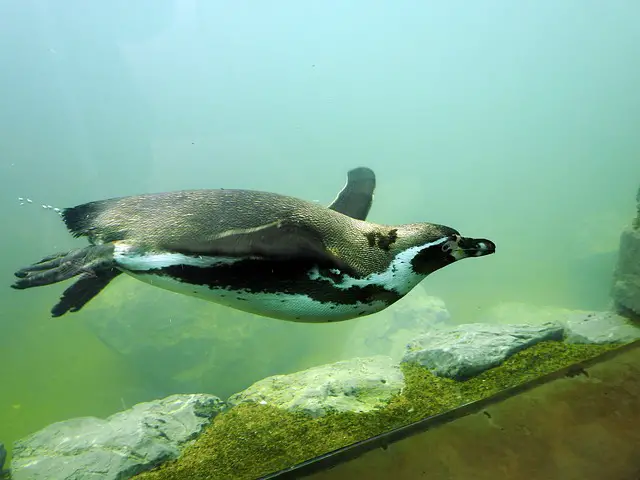
Research and Scientific Studies on Diving Birds
Research and scientific studies on diving birds have provided valuable insights into these fascinating creatures and their roles in the ecosystem. Ornithologists and scientists have conducted extensive studies on diving birds’ behavior, physiology, and adaptations, providing crucial information for their conservation and management.
One significant area of research has focused on the biomechanics of diving bird species. Scientists have examined the physical adaptations of diving birds, such as their streamlined bodies, webbed feet, and specialized beaks and bills, to understand how these features aid in their diving and fishing capabilities.
Researchers have used advanced techniques, such as high-speed photography and digital imaging, to capture images of underwater hunting behaviors, shedding light on the remarkable abilities of diving birds.
Other studies have investigated the ecological roles of diving birds in aquatic ecosystems, including their impact on fish populations and other marine organisms. Scientists have explored the effects of diving bird behavior on marine food webs and the relationships between diving birds and other predators in these ecosystems.
This research has provided important insights into the complex interactions between diving birds and their environment, helping to inform conservation efforts.
Research on the migration patterns and breeding biology of diving birds has also been critical for their conservation. Scientists have used tracking devices and other telemetry methods to study the movements of diving birds, providing valuable information on their distribution and habitat use.
Understanding the breeding biology and population dynamics of diving bird species is essential for effective conservation planning.
Overall, research and scientific studies on diving birds have greatly increased our understanding and appreciation of these remarkable creatures. Continued research is essential for their conservation and management, as we strive to protect these valuable and important components of aquatic ecosystems.
Conclusion
In summary, birds that dive for fish are fascinating and important members of aquatic ecosystems. From seabirds like gannets and pelicans to waterfowl like cormorants and kingfishers, these birds exhibit unique adaptations and characteristics that allow them to effectively hunt underwater.
Their various fishing techniques and physical attributes enable them to catch prey successfully, even in challenging environments like coastal areas.
However, these birds face conservation challenges due to habitat loss, pollution, climate change, and human disturbance. It is crucial to protect their habitats and implement conservation measures to ensure their survival.
Focusing on the North American continent, common diving bird species include the common loon, double-crested cormorant, and brown pelican. Additionally, certain diving bird species are currently threatened or endangered, and ongoing research and scientific studies are essential in understanding these avian species and their conservation needs.
Human interactions with diving birds can also have both positive and negative impacts, such as ecotourism and conflicts with fisheries. As such, it is important to understand and manage these interactions for the benefit of both humans and birds.
All in all, diving birds play a crucial role in aquatic ecosystems, and their conservation is paramount. As we continue to learn more about these remarkable fish hunters, we can work towards protecting and preserving these valuable avian species for future generations.
FAQs: What Birds Dive For Fish?
What birds are known for diving to catch fish?
Birds such as gannets, pelicans, cormorants, and kingfishers are known for diving to catch fish.
What are some common diving bird species found in North America?
Some common diving bird species found in North America include the common loon, double-crested cormorant, and brown pelican.
Which bird species are adapted for hunting fish in coastal areas?
Bird species such as seagulls, terns, and ospreys are adapted for hunting fish in coastal areas.
What are some fascinating fishing techniques used by diving birds?
Diving birds employ techniques such as plunge diving, shallow diving, and pursuit diving to catch fish.
How do birds adapt for diving and fishing?
Birds adapt for diving and fishing through features like streamlined bodies, webbed feet, and specialized beaks or bills.
What are the migration patterns of diving birds?
Diving birds have various migration patterns, with some species relying on fish as a primary food source during their seasonal movements.
What are the conservation challenges faced by diving birds?
Diving birds face conservation challenges such as habitat loss, pollution, climate change, and human disturbance.
Which diving bird species are threatened or endangered?
Several diving bird species are threatened or endangered due to habitat loss, pollution, hunting, and other human activities. Some examples include the African penguin, the Galapagos penguin, the black-footed albatross, the spectacled eider, the short-tailed albatross, the red-throated loon, and the yellow-billed loon. These species are protected under various conservation laws and efforts are being made to preserve their populations and habitats.
How do humans interact with diving birds?
Humans interact with diving birds through activities such as birdwatching, ecotourism, fishing competition, and conflicts with fisheries.
What research has been conducted on diving birds?
Significant research has been conducted on diving birds, focusing on their behavior, physiology, and ecological roles.

